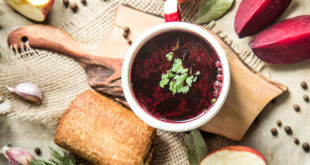
Sake is fermented from rice and lies somewhere between beer and wine as an alcoholic beverage. It’s popularity has grown in the U.S., and this has mostly been the result of the growth of sushi in popularity.
In fact, most people would never think about ordering sake if they weren’t eating Japanese cuisine.
Well, that’s changing, and fast. The introduction of premium sakes into the American market has given birth to a group of sake connoisseurs across the U.S., and as more people learn about sake, the more this trend is going to grow.
The heated sake you’re used to having at your favorite Asian restaurant is actually the bottom of the barrel in the sake world, like ordering one of those gallon jugs of E&J Gallo wine. Sake is heated to mask impurities and poor flavor.
Good sake should be served at room temperature or even slightly chilled, depending on the brewer’s recommendation.
Premium sake also varies widely in taste, and like wine, ranges from sweet to dry. And more and more Americans are discovering that good sake can be enjoyed with a variety of cuisine, not just Asian food.
It’s become a hot trend in fine dining restaurants from Seattle to Minneapolis to New York, and as consumers become more educated, the market for premium sake is going to continue to grow.

Sake has been around for thousands of years, but the brewing process for premium sake was only developed about 30 years ago, when technological advances allowed Japanese brewers to achieve new purity levels in the milled rice, water, and other ingredients of sake.
This, combined with an advanced brewing process, led to a blossoming of complex flavors in the new generation of sake. This range of flavors means that sake can now be enjoyed with a variety of foods, just like wine. And, like wine, different regions produce different types of sake, from light, dry offerings that pair well with fish to rich, darker varieties for meats and heavier meals.
If you’re considering buying some premium sake for your restaurant, here’s a couple tips to keep in mind:
If at all possible, taste the sake first. Look for balance in taste. Sake can range from sweet to dry, but no matter what, it should have balance and smooth drinkability. Harsh or artificial flavor is a sure sign of poor quality.
Look for color. Most premium sakes will have a light amber or golden color. Clear sake can also be good, but typically clearness indicates too much filtration, which tends to rob the sake of its flavor and character.
Watch out for dark brown coloring. Unlike wine, sake doesn’t age well, and if it is exposed to hot temperatures or excessive light, it will degrade even more quickly. In general sake shouldn’t be kept for more than a year. A surefire sign that a sake has degraded is dark brown discoloration.
Price doesn’t always mean you get what you pay for. Of course, Japanese sake is going to offer a better range of flavors and quality than American sake. But prices for Japanese sake is usually doubled when it’s imported. There are a surprising variety of American brands that are very drinkable and a fraction of the price. Naturally, the best of the best is going to come from Japan.
Sake can be a great addition to your restaurant’s repertoire and give your customers a truly unique dining experience they will remember for a long time to come.
 Corner Booth Blog | TundraFMP Restaurant Supply, News & Equipment Blog
Corner Booth Blog | TundraFMP Restaurant Supply, News & Equipment Blog




This is great info! I love cold sake but have no idea how to order it and if it were in more restaurants I would probably order it more. For anyone who hasn’t had sake…you should definately try it!